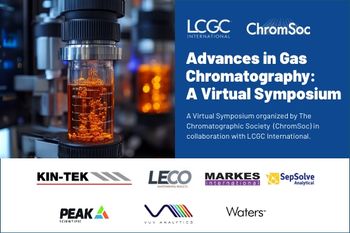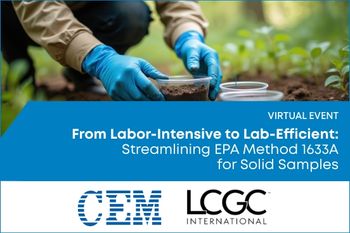
The Latest News in Environmental Analysis
Here is a compilation of some of the latest studies in environmental analysis.
To commemorate Earth Day, LCGC International is publishing numerous Q&A interviews, news articles, and technical content that spotlights the current chromatographic research taking place in the field of environmental analysis and sustainability.
Environmental analysis is an important interdisciplinary study. It is essential to the flourishing of human nature because it helps us understand the potential risks and opportunities that may arise from environmental changes, allowing us to anticipate how changes in the climate could directly impact us.
Environmental analysis can take many different forms. Chemical analysis, biological surveys, soil tests, vegetation surveys, and remote sending are the main analytical methods used in environmental analysis, and they accomplish specific goals.
Below is a compilation of recent news articles the LCGC International team wrote that showcase some of the most current research in environmental analysis. Topics include per- and polyfluoroalkyl (PFAS) substances, emerging contaminants (ECs), nanoplastics, and more.
Title: Green Metrics for Analytical Methodologies Measured for Detecting Emerging Contaminants in Food and Water
Summary: A group of Malaysian and American scientists recently analyzed the benefits of using green metrics for detecting emerging contaminants (ECs) using analytical methods.
Title: North Carolina Collaboratory Expands PFAS Research Capabilities
Summary: The North Carolina Collaboratory’s partnership with Thermo Fisher Scientific’s mass spectrometry instruments is designed to further research into per- and polyfluoroalkyl substances (PFAS).
Title: Trends for Monitoring Micro- and Nanoplastics in Soil
Summary: In a recent study, scientists from Europe reflected over how more testing protocols must be created to monitor and control micro- and nanoplastics (MNPs) in soil.
Link:
Title: Sustainable Green Solvents in Microextraction: Review of Recent Advancements
Summary: Microextraction using sustainable green solvents, followed by mass spectrometric analysis, comprise a combined approach that is still in its infancy.
Title: PFΔScreen — A New Tool Developed for Efficient Prioritization of PFAS in Environmental Samples
Summary: A new study from the University of Tübingen presents a new Python-based open-source software tool for PFAS detection.
Title: Green Chemistry Top of Mind at Analytica
Summary: The 2024 Analytica trade fair brought together thousands of exhibitors and attendees from around the world. Many are focused on developing sustainable technology.
Link:
Title: Analytica 2024: A Look at Anthropogenic Emissions
Summary: At Analytica 2024 in Munich, Germany, an afternoon oral session took place titled, “Tracking Anthropogenic Emissions: Environmental Analysis of Elements, Organic Trace Chemicals and Isotopes (GDCh).” During the session, experts presented four talks that covered the latest developments of detecting organic trace chemicals and isotopes in environmental samples.
Link:
Title: Using LLE and GC–MS to Separate Biologically Extractive Components in Alaska Yellow Cedar Trees
Summary: A recent study explores the use of liquid–liquid extraction (LLE) and gas chromatography–mass spectrometry (GC–MS) to identify the compounds found in extractives of Alaska Yellow Cedar trees.
Link:
To continue your exploration of our “LCGC International Celebrates Earth Day,” you can view our Featured Q&As and Technical Articles landing pages by clicking on them below.
Newsletter
Join the global community of analytical scientists who trust LCGC for insights on the latest techniques, trends, and expert solutions in chromatography.




